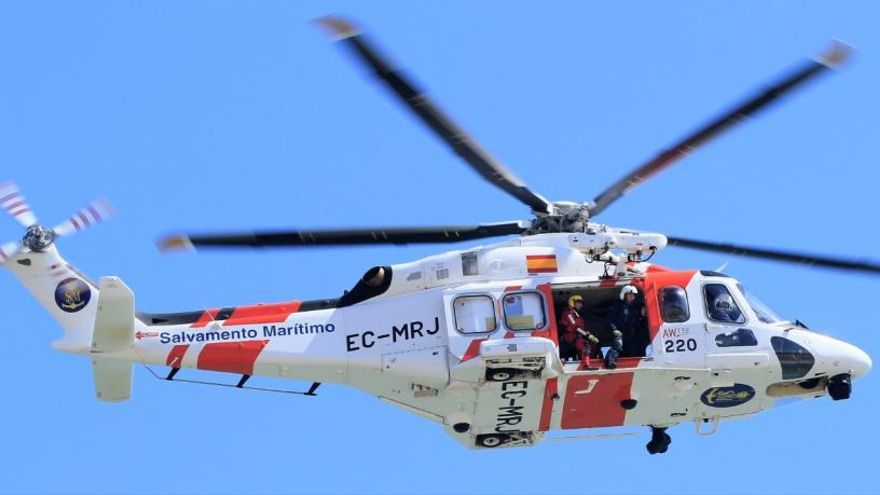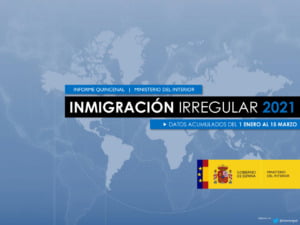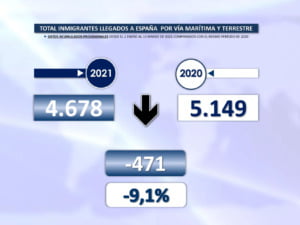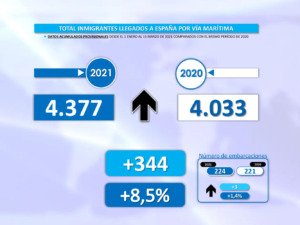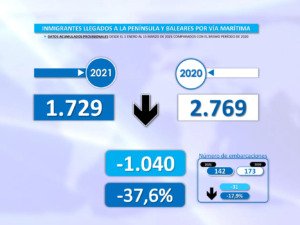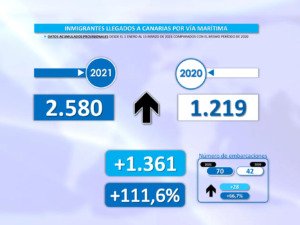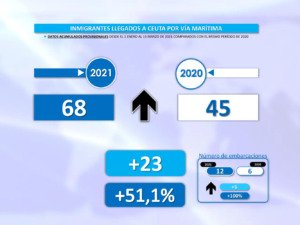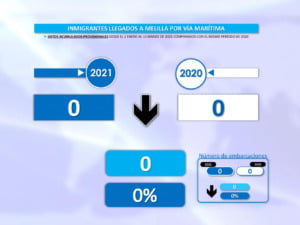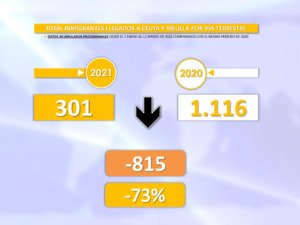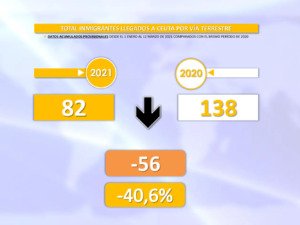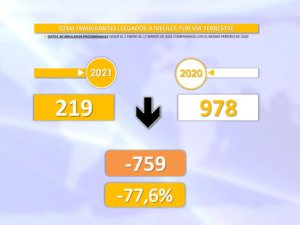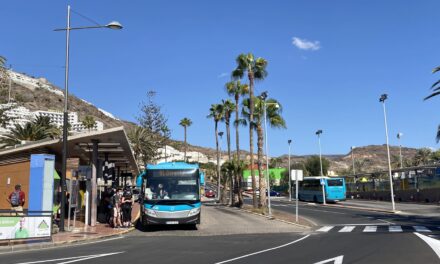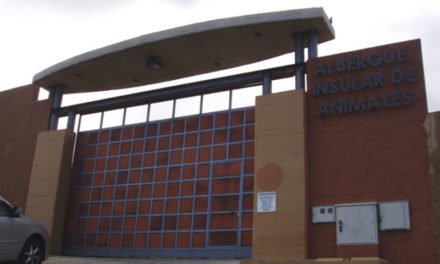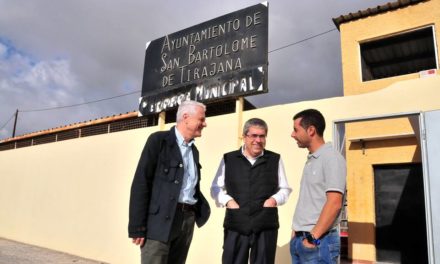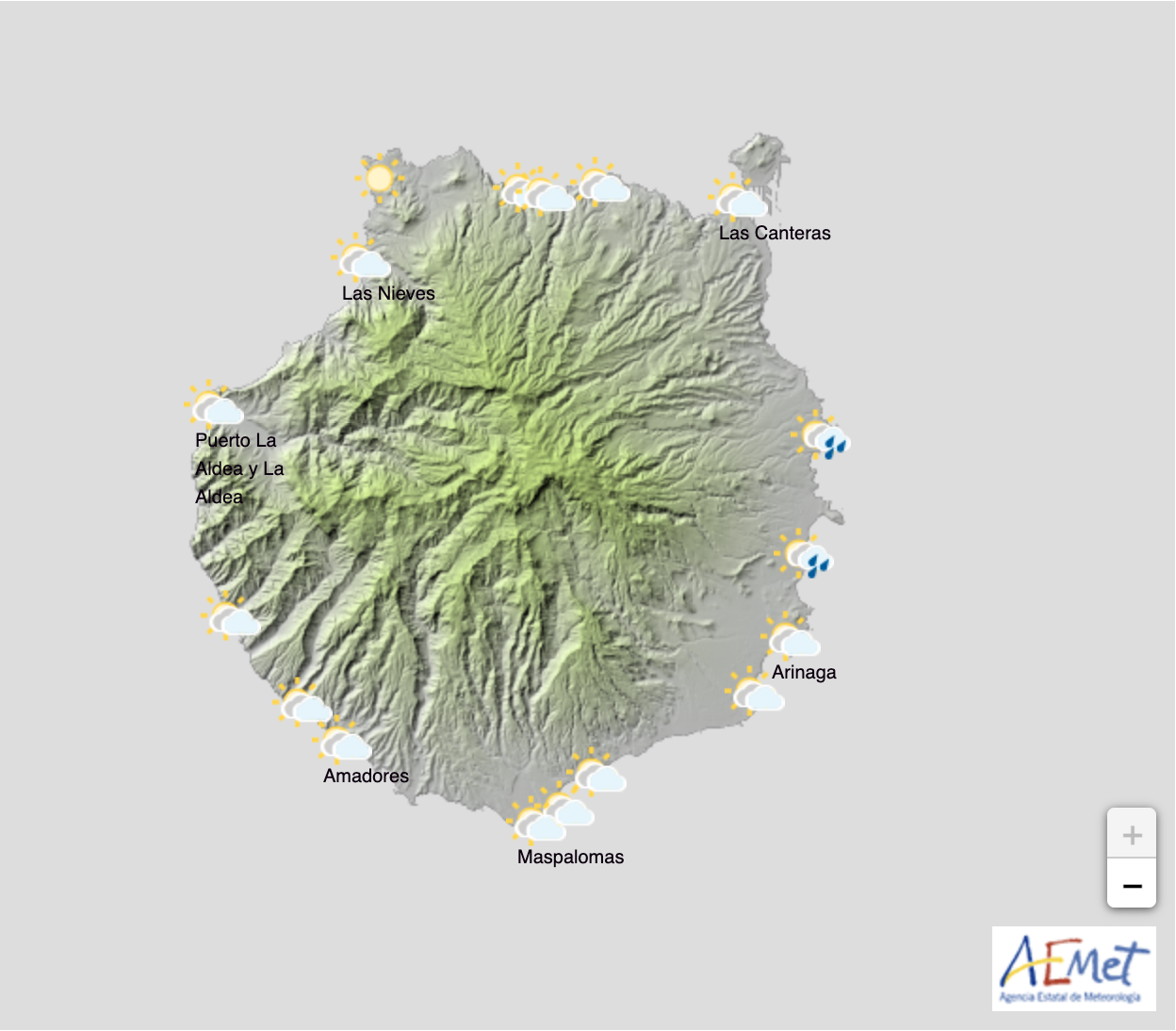As the springtime arrives and the weather becomes less hostile, so The Canary Islands, and the 100km+ stretch of ocean separating us from the African coast, are likely once again to become the focus of Maritime Rescue operations in an increasing trend toward irregular migration that is good for no-one, not The Canary Islands, not the currently absent tourists, not the residents, not the governments, not the police, not the EU, and least of all, the migrants themselves. After last year’s huge increase in patera arrivals many had hoped we had already lived through the worst of a situation about which we were being forewarned as early as summer 2019.
All the current indicators, however, point to a further increase in migrant arrivals this year, and even after Spain’s and Europe’s failure to properly prepare, and their subsequently inadequate response in 2020, many fear the worst is still yet to come. Gran Canaria’s Sasemar 103 Maritime Rescue (Salvamento Maritimo) aircraft have once more located boats adrift this week, the latest carrying about 40 people on board who were about 81.5 nautical miles (149 kilometres) southwest of Maspalomas (Gran Canaria). It follows the rescues of nearly 100 others, including women and children, in the preceding days, many of whom were in need of critical medical attention.
Once found, the maritime rescue sent their Guardamar Concepción Arenal vessel to the area where the boat was located – a journey of about three hours to reach the exact point -, which also meant alerting a passing ship, which was in the area, the ‘Alicia’, to request they approach the migrant boat to help keep track of its movement and the people onboard. The prevailing currents in the area travel away from The Canary Islands, had they not been spotted they almost certainly would have perished in the open ocean as many do, without a trace, and without anyone ever knowing what has happened.
The maritime rescue Sasemar 103 has continued to search the stretch of water between Africa and the Canary Islands, Europes most dangerous migratory route, in the hope of locating any more boats that may be adrift, as this one was found only after several warnings about various vessels that have left the coast of Africa in recent days, although currently maritime rescuers do not know how many might still be found. Another one was rescued on Tuesday night not far from Gran Canaria.
While many oppose migration in open boats to The Canary Islands (practically no-one supports it) particularly following a 750% increase in arrivals during 2020, simply put, it is a fact that we are having to deal with. There is literally no way to stop people risking their lives unless we invest longterm in improving their situations in their countries of origin. Failure to do so is to simply accept that people in poverty will always try to find ways out of poverty. We need to help them do that, or they will try to find any way they can with or without us, and that means more arrivals without any control.
Indeed there are those who oppose any type of maritime rescue efforts to prevent loss of life, but really, is there anything anyone can do in the short to medium term to stop would-be migrants from getting into rickety boats, often overloaded and not fit for purpose, in their attempts to escape the effects of climate change, poverty, hardship, oppression and conflict in Africa? Those adrift that we don’t rescue are simply never heard from again. Their failure is simply no deterrent, just letting people die does not stop others from trying, as the information is never heard by others who, rightly or wrongly, think the potential improvement to their lives worth more than wasting away in the place they were born.
 All indicators so far this year point to an even greater increase in maritime migration in 2021, with more than double last year’s numbers, the second highest number of arrivals in history, already having been registered during the first two and a half months of this year compared to the same period last year.
All indicators so far this year point to an even greater increase in maritime migration in 2021, with more than double last year’s numbers, the second highest number of arrivals in history, already having been registered during the first two and a half months of this year compared to the same period last year.
Anti-immigration protesters have focused on the temporary use of empty tourist hotels, as accommodation, in recent months, while internment camps were being constructed to try to deal with the large numbers who had already arrived. Almost all migrants that were briefly accommodated in otherwise empty hotels on the south of Gran Canaria have now been moved into camps to await deportation, or those with asylum claims (less than 10%) transferred to the mainland. A further protest against migrant arrivals has been organised for Saturday the 20th March, where organisers will attempt to create a “human chain”, asking participants to all dress in white, in order to try to send some sort of public message about their dissatisfaction concerning people trying to come here in the first place. The actual message behind the demonstration is not really very clear yet, though the event will apparently be filmed from a helicopter and so we are expecting a video production to subsequently make clear the organisers intentions.
While 23,023 individuals were recorded arriving by boat last year, all mostly stuck on the islands due to COVID restrictions closing down international travel, stopping repatriation or deportations, more than 17,000 of those arrived in the last four months of the year. There were many who feared that large numbers of people unable to continue on their journeys towards mainland Europe would result in mass criminality, however crime actually went down last year, with a total of just 122 crimes involving migrants having been recorded in the 80 days prior to January 20th, 65 of those being falsified documents, and another 45 of those related to “security” issues having resulted from altercations among the migrants themselves. While there have been some isolated cases of young migrants allegedly stealing booze from local businesses, and at least one accusation of serious sexual assault, all of which have resulted in immediate arrests and investigations, in general there has been little by way of trouble, with the exception of an occasional social media hoax, several false reports and a few would-be vigilantes with knives trying to present an atmosphere of mayhem, where there is none.
Irregular migrants, with nothing to do, and not allowed to leave the islands, have certainly been more visible, in the absence of any tourists for the last year. While many have few if any resources, there are those of them who have enough support to survive a few months. They receive no financial aid, and so quickly become dependent on the reception network, where they wait in hope, slowly realising that 90% or more of them will be told to return to their points of origin without ever getting to mainland Europe.
Small numbers of residents in the south have certainly felt less secure, many women report feeling intimidated by groups of young men hanging around the streets. However there have been very few actual incidents. To try to allay public fears, about 40 extra Policia Nacional were drafted in to police the situation more visibly, and 20 or so of our specialist Guardia Civil tactical response unit, GRS8 based on Tenerife, were posted twice to the south of the Gran Canaria to ensure a very visible presence on the streets, however they have primarily been relegated to traffic controls and stop and search duties. One GRS8 officer consulted (not an official spokesperson) directly told The Canary News “Right now we are mainly here to help Canarian citizens and foreign residents to feel safer. Though we have been called to isolated incidents, our skill sets have not been required, so we observe and make sure that we are visible to the population, carrying out patrols and traffic stops. There is not a serious security issue right now on Gran Canaria, it is more public relations to keep everyone calm.”
By far the biggest concern so far has been the handling of unaccompanied minors, more than 2,600 of whom are currently under the care of the regional government’s child protection services, with very little support having yet materialised from mainland Spain, with the exception of some extra finances, and wholly inadequate facilities being used to accommodate the youths among residents living in empty tourist resort towns.
Like it or lump it, we face an even larger influx of migrant arrivals this year, and therefore maritime rescue operations. Everyone, including Spain’s own recent Ombudsman’s report, agrees that the response has been wholly inadequate, and we as a society need to improve how we deal with the reality of something that cannot be easily stopped in the short term. We face the potential of a quickly growing crisis, primarily humanitarian, here on Europe’s southernmost maritime border, if Spain’s central government and the EU do not act quickly to ensure that this archipelago does not become a prison, for both irregular migrants, and residents alike over the coming months.
With growing unemployment and an economy in free fall we can expect more tension from the resident population who see increasing migration as an existential threat on top of so many other calamities over which they have little or no control. This will take a lot of energy and many years to effectively overcome, but right now we need to calmly deal with the realities of the situation. We either work together to get through it, or more angry voices, offering no real solutions, continue to polarise our communities.
Edward Timon.:. Editor

